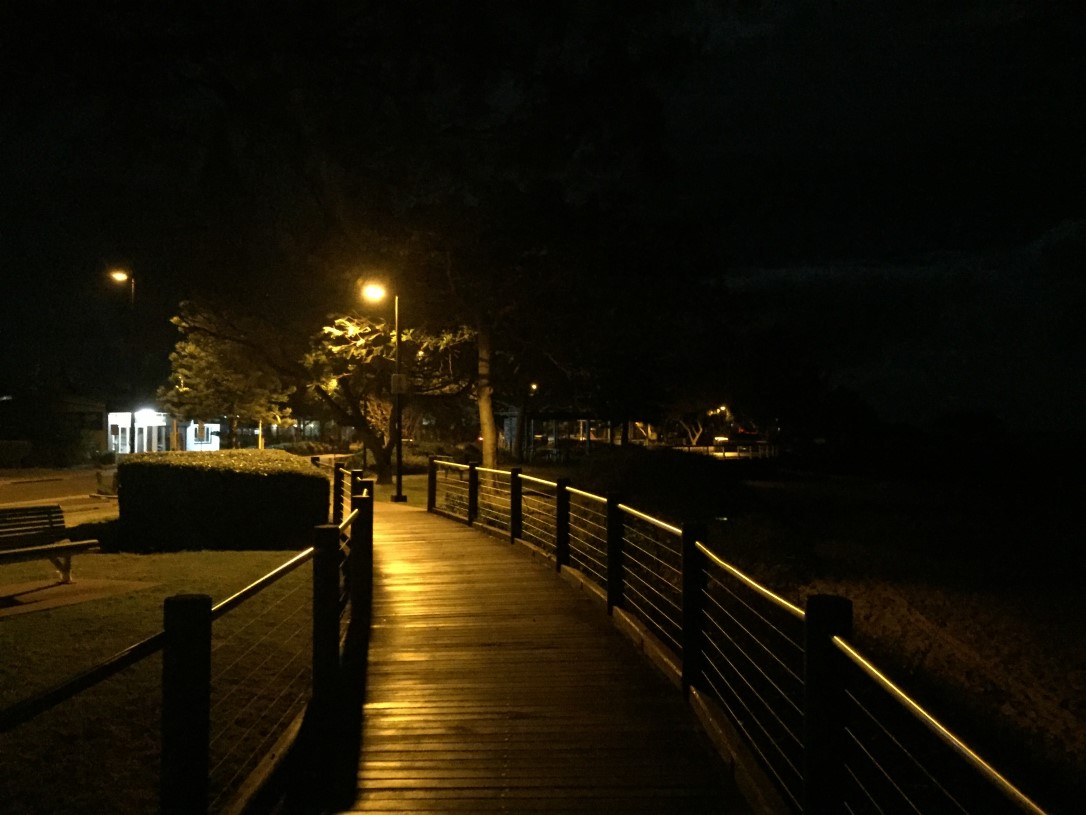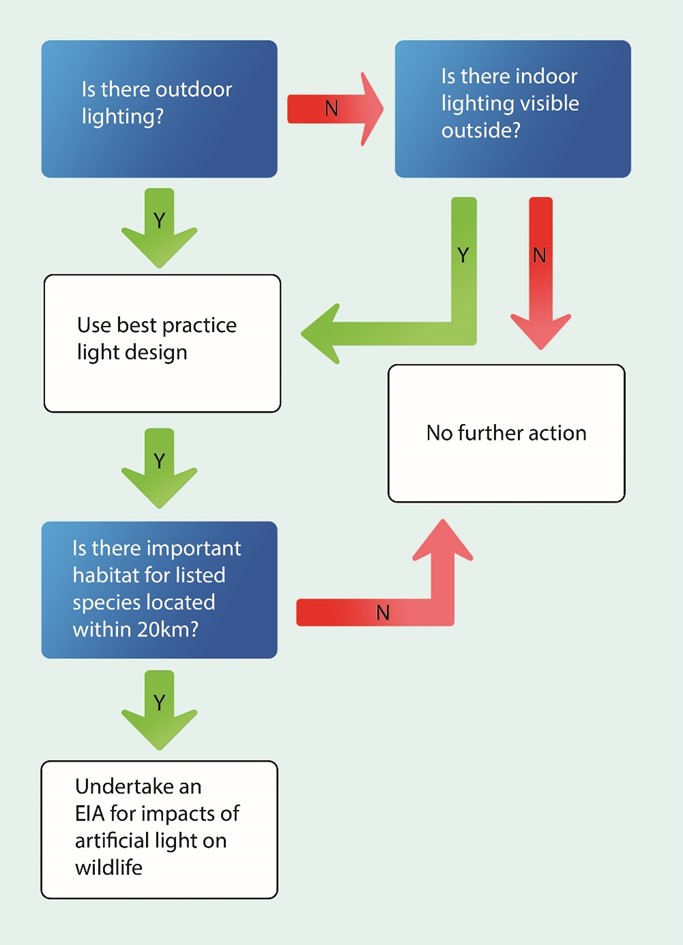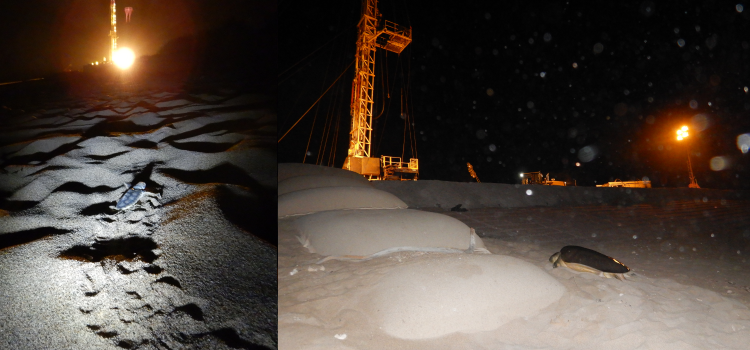On this day 60 years ago the first successful operation of a laser system occurred. Light and light technologies are now celebrated internationally on 16th May each year. Light has brought us many advances in medicine, communication and technology and allowed us to be active at any time in the 24-hour cycle of a day.
On the other hand, dark skies and the myriad of stars have inspired generations of writers, artists and scientists alike. The light of the stars has guided navigators to new lands and the natural cycle of light and dark sets our body clock and allows us to have a healthy sleep-wake cycle.
Animals also use daily light and dark cycles for their sleep pattern, and as a cue to forage for food. Many plants will flower in response to either longer or shorter daylight hours – we notice this as the changes in season throughout the year. Changes in daylength can stimulate animals to mate so that their offspring are in step with the food resources available in season.
Can we have too much light?
In our brightly lit cities, many people now are growing up without the opportunity to see any but the brightest stars in the sky, but this is not the only impact from excess light.
Picture being in the bush, or down on the beach at night, where you are far enough away from settlement that you have no direct view of lights, however you can see the glow of the nearest town or city over the horizon. Think about the blinding effect from oncoming traffic when the driver has forgotten to dim their headlights. People that live in country areas, used to absolute darkness when going off to sleep, may be familiar with the frustration of trying to get to sleep in the city when the light from nearby streetlights is seeping through the blinds.
In addition to this the blue light from computer screens and portable devices can disrupt our sleep cycle and lead to a range of health problems including several forms of cancer, diabetes, reproductive and digestive problems and depression.
These are all forms of light pollution which waste energy by lighting unnecessary areas, have detrimental impacts on our ability to sleep and can disturb wildlife or even whole ecosystems.
How do artificial lights affect marine turtles?
Female turtles may be discouraged from nesting on their preferred beach due to excess lighting, or after nesting travel inland, and away from the ocean, towards lights from towns. This happened in Queensland recently where a nesting flatback turtle ended up at a nearby house:
Artificial light close to beaches also has a detrimental impact on hatchlings as they can get misorientated (and be led towards lights rather than heading straight for the ocean) or disorientated (and move in circles on the beach, confused whether to move towards artificial light or the natural reflection of light on the ocean). To find out more about these impacts read the information on light here.
The high level of industrial infrastructure associated with resource extraction and transport poses a potential threat to turtles in the Pilbara. Structures like rigs and jetties have increased artificial light sources that spill into the water offshore from turtle nesting beaches. North West Shelf Flatbacks supported a recent study into the impacts of artificial light near shore to flatback nesting beaches.
Hatchling flatback turtles were fitted with tiny acoustic transmitters, about the size of a tic-tac. Acoustic receiver arrays were set up in the water around the hatching area, and the movements of the hatchlings were recorded with different light treatments. The hatchlings were found to linger around the lights, in the nearshore area, become disoriented and to use up vital energy resources by swimming against currents to move towards the light sources:
Are LEDs The Answer?
LEDs have replaced older sodium lights in many places with the benefit of reduced energy consumption. To understand the problem with LEDs we need to understand more about light and the electromagnetic spectrum. Light can be detected as a wave – just like waves in the ocean, the wavelength is the distance from one wave peak to the next. The spectrum goes from long wavelength radio waves (1mm – 100km), to short wavelength gamma rays, emitted from radioactive elements with wavelengths equivalent to the size of a sub-atomic particle (10-12m).
In the middle is the band of visible light, with longer wavelength colour red to the shorter wavelength blue end of the spectrum. However, this is the visible spectrum as we perceive it. Many animals can see or sense other parts of the spectrum. Many pythons have heat sensitive pits on their heads that allow them to sense longer wavelengths than red – into the infrared band, whereas many birds and insects can detect light in ultraviolet.
This means that for lighting design we need to understand the qualities of the light we are using and the sensitivity of the wildlife that may be impacted by the lighting choices. Many birds, marine turtles, insects and fish are particularly sensitive to short wavelength blue and ultraviolet lights, this is in part an adaptation to living in lower light environments – for example living in water where the higher energy blue light penetrates, but light in the red end can’t be detected as easily.
Light in this blue/ultraviolet range can also have other effects on both wildlife and on us. It can disrupt the production of melatonin – commonly known as the sleep hormone - this is why medical experts urge us not to look at screens before bed or if you are having trouble getting to sleep! Many animals also use the hormone melatonin, to regulate the sleep-wake cycle and reproduction timing.
Older sodium lights emit light in the orange part of the spectrum, but LEDs also have a peak of light in the blue end of the spectrum (surprisingly the ‘warm’ coloured LEDs often have even more intensity in the blue end of the spectrum). It is important to avoid lights with this blue peak as they are the most likely to disturb wildlife like turtles and sea birds.
Guidelines for assisting our wildlife
North West Shelf Flatbacks has assisted in the development of the new National Light Pollution Guidelines. These give the process to follow where lighting may affect wildlife. They will apply to new developments, lighting upgrades and where existing light is impacting wildlife. They guide best practice in designing appropriate lighting for developments and recommend undertaking environmental impact assessments for effects of artificial lights on listed species which are known to have behaviour, survivorship or reproduction impacted by light.
Best practice lighting design incorporates the following design principles:
- Start with natural darkness and only add light for specific purposes.
- Use adaptive light controls to manage light timing, intensity and colour.
- Light only the object or area intended – keep lights close to the ground, directed and shielded to avoid light spill.
- Use the lowest intensity lighting appropriate for the task.
- Use non-reflective, dark-coloured surfaces.
- Use lights with reduced or filtered blue, violet and ultra-violet wavelengths.

The picture below was taken in Bargara, Queensland, a town near Mon Repos Conservation Park, an important nesting area for marine turtles.

Here the local council changed their street lighting, and these lights illustrate some of these principles:
- Streetlights are required for safety whilst moving around town at night.
- Adaptive controls are not appropriate for street lighting but are very effective for lights like security lights on private dwelling, where light can be combined with movement sensors to ensure that they are only lighting the area up when people need them.
- The lights only light up the footpath – they are positioned lower than most streetlights and are well shielded. Light does not spill onto the beach (right hand side of picture) or up into the air – it is directed downwards by shielding the lights.
- A low intensity light has been used as that it provides sufficient, but not excess light.
- The surrounding surfaces, such as handrails are painted in a dark colour so that the light is not reflected onto other areas.
- The lights used emit light in the orange/ red end of the spectrum, which is less disturbing to marine turtles.
These principles can also be used by householders to minimise the impact their lighting has on the surrounding environment.
Assessing the potential impact on wildlife
The impacts of lights need to be assessed against the types of species or important habitat surrounding the light source. Light sources 15-18km away from rookeries can affect hatchling turtles and some fledgling seabirds may not take their maiden flight if disturbed by lights 15km away. The guidelines recommend assessing the impact of lighting on any important habitat up to 20km away.

As part of the environmental impact assessment process, the light from the project will need to be described, along with wildlife that may be impacted. A risk assessment should be performed and used to draw up an artificial light management plan, including ways that light can be mitigated. Finally the artificial light should be monitored, along with the behaviour of relevant wildlife to ensure compliance with the light management plan.
Information critical to monitoring the effects of artificial light on wildlife include:
• Spatial extent of sky glow
• Bearings and intensity of light sources along the horizon
• Visibility of light (direct and sky glow) from wildlife habitats
• Spectral distribution of lights sources.
As the number of light sources in an area increase there will be a cumulative impact on local wildlife. Management should be undertaken on a regional collaborative basis.
With good planning and mitigation techniques we should be able to reach a happy balance between our need for light and the importance of darkness for wildlife’s health and wellbeing.
For more information download the National Light Pollution Guidelines for Wildlife.
By Hannah Hampson
Image header: Flatback turtle females and hatchlings attracted towards artificial lights (DBCA).

